‘Gold of the Great Steppe’ The Fitzwilliam Museum by Nissen Richards Studio
A new exhibition has opened at the Fitzwilliam Museum, Cambridge, featuring exhibition and graphic design by Nissen Richards Studio. The exhibition, Gold of The Great Steppe, will run until January 30, 2022 and is the first-ever reveal, anywhere in the world, of an archaeological sensation, comprised of hundreds of outstanding gold artefacts recently discovered in the extraordinary ancient burial mounds of the Saka people of East Kazakhstan.
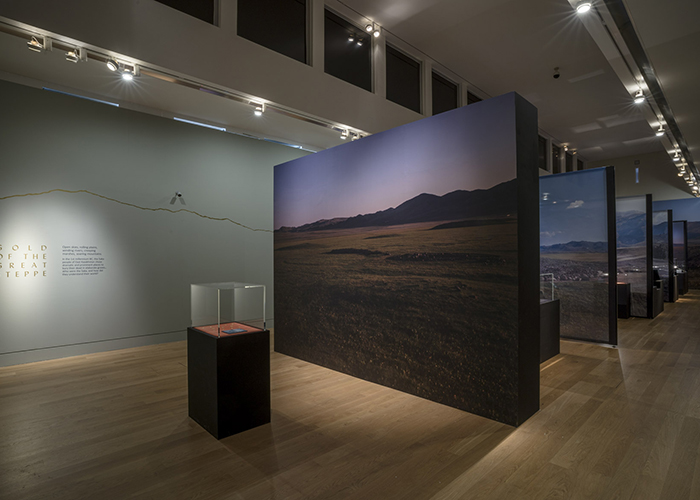
Included in the exhibition are the spectacular contents of an extremely rare, undisturbed and intact Saka burial, which is only the second to be discovered in the territory of Kazakhstan. In a richly-furnished grave, a teenage archer, no older than 18 when he died, was buried in the same chamber as a younger female relative, aged 13-14. While the girl’s remains were heavily looted in antiquity, the grave of the male youth appears to have been protected from being plundered by a rock fall, which shielded him from – and from any outside knowledge of his existence – for over 2,500 years.
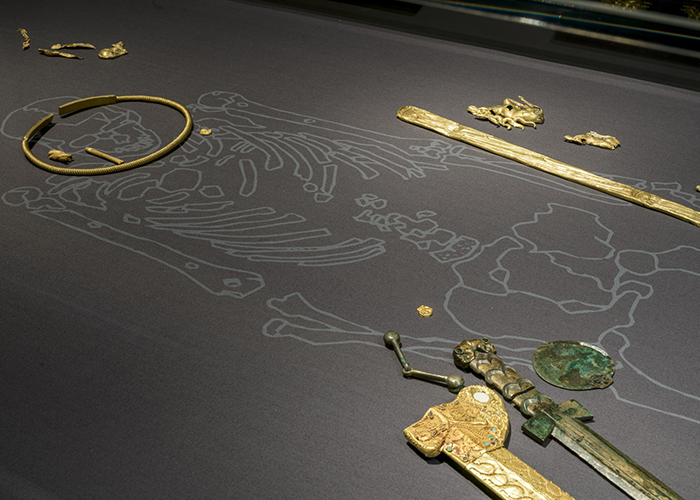
The exhibition places these and other archaeological finds discovered over the last three years by Kazakh archaeologists on the international stage for the first time, giving UK audiences a unique opportunity to see and understand the rich cultural history of a country the size of western Europe, showing how its people lived and travelled and the things they made and believed in. The artefacts reveal a distinctive, advanced society, still being uncovered as modern archaeological methods enable scholars and scientists to find and analyse not only burial mounds but the remains of settlements. Known to be fierce warriors, the Saka people were also skilled craftspeople, producing intricate gold work with an artistic language indicating a deep respect for the animals around them, both real and imagined.
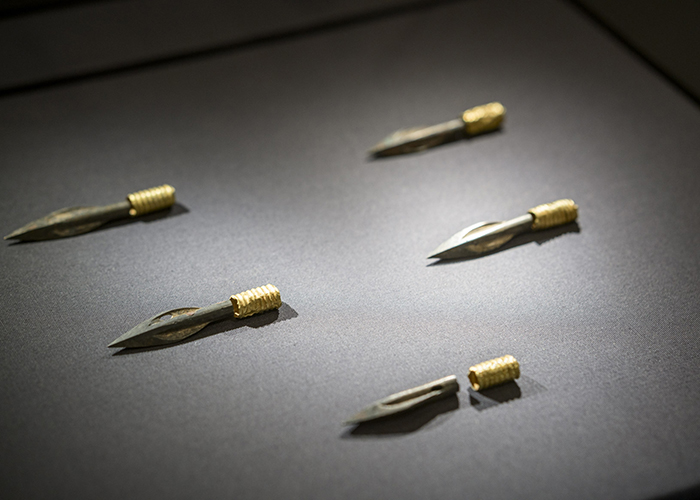
Pippa Nissen, Director of Nissen Richards Studio, commented on the practice’s design approach: ‘For this, our second exhibition for The Fitzwilliam Museum, we were asked to tell the rich stories behind the objects that form this incredible discovery, along with the ongoing archaeological processes that brought them to light. Visitors are encouraged to investigate the exhibits, to discover these stories actively and to take part in their own ‘archaeological’ experience. We enjoyed solving the design challenge of how best to contextualise and display these sumptuous but small-scale gold objects.’
Nissen Richards Studio’s design concept is based around the area’s incredible landscapes and the availability of superb photography of the burial grounds, with the galleries’ material palette directly inspired by these colourful landscapes. The exhibition focuses on the craft used to create the gold objects and the importance of symbolism and particularly animals to the people who created the burial mounds. Linking elements include a single ‘voice’ throughout the different themes and the idea of the gold as a geological seam, with gold highlights used for the info-graphics, for example.
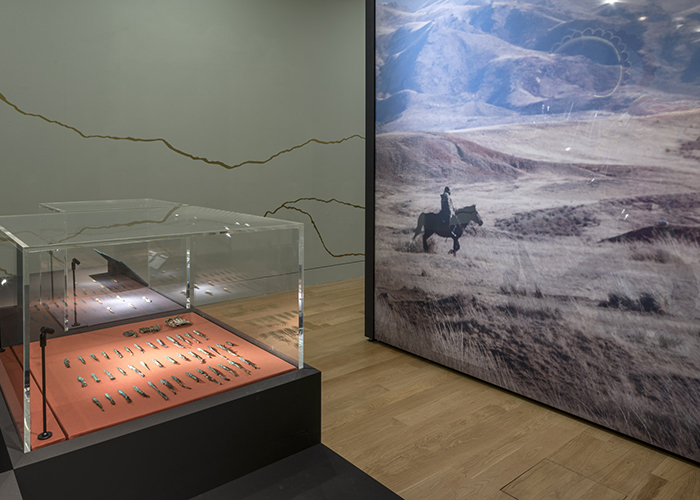
The design and content centre on a number of key themes:
Gold – and an understanding of gold as part of the Saka culture
Craft – the processes and technologies relating to the area
Animals – the symbolism of animals, both mythical and real
Landscape – the local and global context of the objects
Archaeology – viewing history through the lens of science
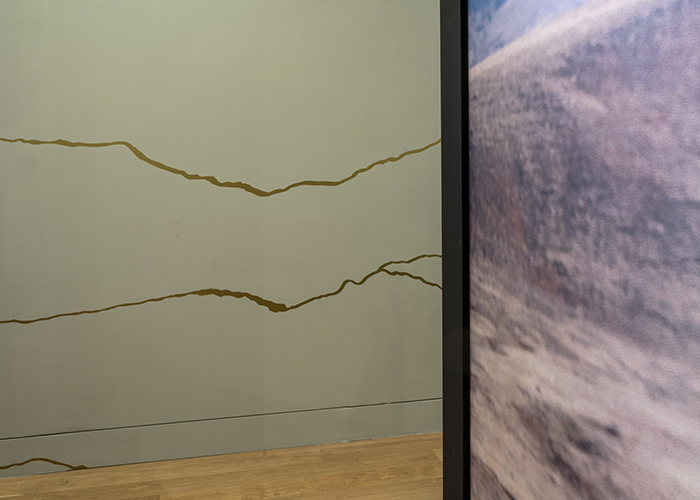
Plinths and showcases rise out of a ground plane within the exhibition, using a rectilinear language derived from the methodology of an archaeological dig. Conceptually, the objects are rooted in the land, with the wide landscape photography contextualising the narrative and content, with taut, layered-format fabric screens featuring atmospheric prints and a strong use of colour. Objects are displayed on these beautiful fabric panels and highlighted with careful lighting, so that individual gold pieces glint and catch the eye as visitors move round the space.
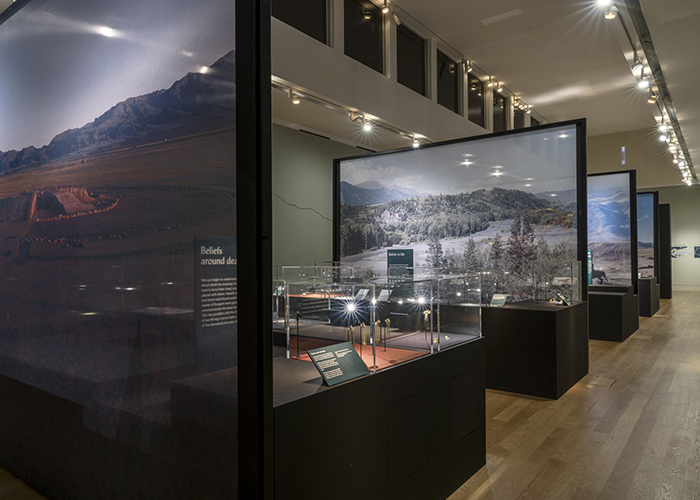
There are nine information ‘clusters’ in total in the exhibition, with a fabric panel at the centre of each and circulation space around. The exhibition is located within two gallery spaces and features a parallel arrangement of clusters in the first space and staggered arrangements in the second. Conservation-grade fabric and Oddy safe printing create a panel surface that allows the visual language to shine. This language includes animal motifs, which also serve as an engaging way for younger audiences to interact with the content. Gold seams follow the path of the landscape imagery across the space.
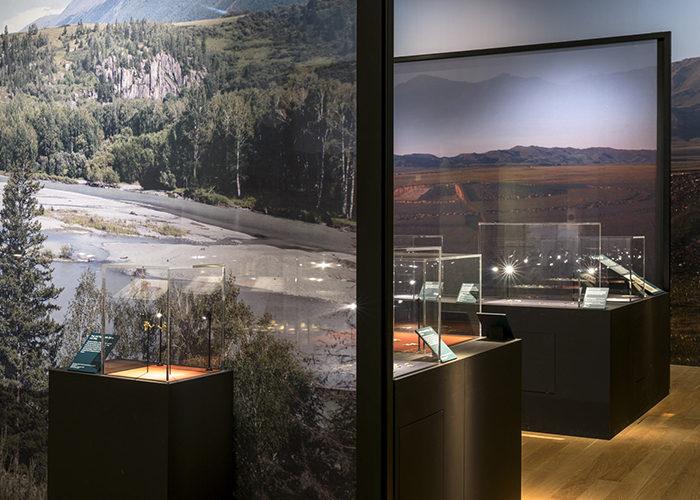
David Evans, Exhibitions Manager at the Fitzwilliam Museum commented ‘We are overjoyed at the opportunity to make an exhibition that demonstrates the incredible artistry and sophistication of this heritage material from East Kazakhstan. Nissen Richards Studio helped make evident our joy in sharing these artefacts with our museum visitors. The openness and expanse of the Steppe, the immediacy of the excavation, and the intimacy of the jewel-like objects all inform the design of the exhibition galleries and display. Having a chance to show such amazing material artistry without losing the dignity and meaning of the objects is a delicate balance. Bringing these works into the light without losing any of their magic has been the achievement of careful, well-informed design and part of why this exhibition represents a milestone for our museum.’
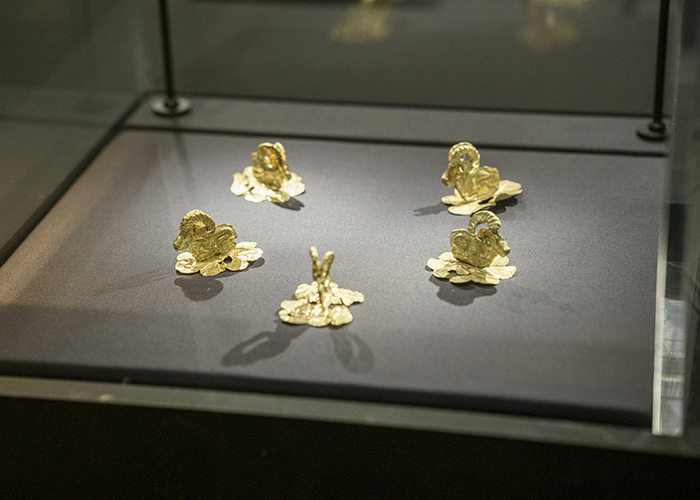
Background to the Discovery:
Five years ago, a large-scale and unique archaeological research programme was launched in the East Kazakhstan Region of the Republic of Kazakhstan, identifying and excavating dozens of new archaeological sites to be studied. In 2019, the East Kazakhstan Regional Museum of Local History and the University of Cambridge (which includes The Fitzwilliam Museum) began working together to arrange joint research projects and to create an exhibition that draws on material and studies from this important research programme. The exhibition brings together Kazakhstani archaeological finds and research from three different burial complexes in East Kazakhstan: Berel, Shilikti and Eleke Sazy.
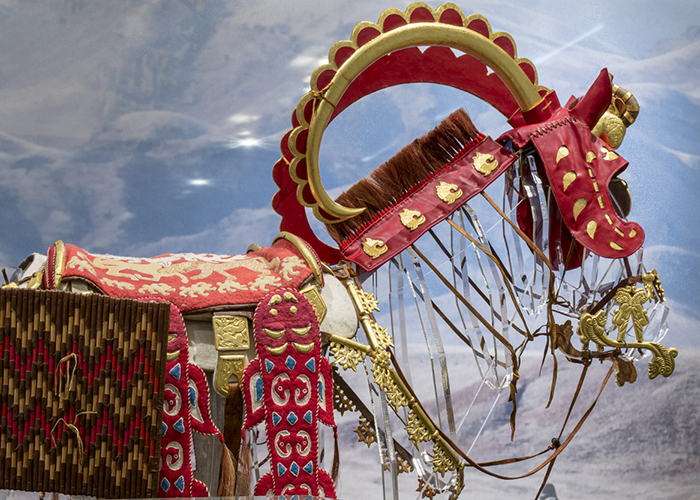
Luke Syson, Director of the Fitzwilliam Museum, said: ‘It is hugely exciting to be announcing the loan of these incredibly important, recently discovered gold artefacts this autumn. We look forward to bringing the extraordinary culture of the Saka people to life for our audiences and are grateful to our partnership with East Kazakhstan without which enlightening exhibitions such as these would simply not be possible’.
The exhibition is supported by and organised with the Regional Museum of History and Local Studies of the Department of Culture, Archives and Documentation of East Kazakhstan.
Photography by Gareth Gardner




